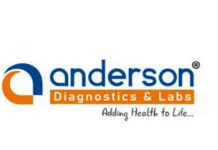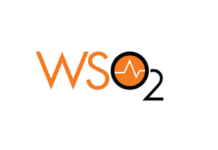Investment in materials and technologies alongside new applications, is driving growth for holography in India, says Dr Paul Dunn, chair of the International Hologram Manufacturers Association (IHMA).
New Delhi, July 28, 2020: Demand continues to strengthen the market in India for holography as we see continued integration of holography alongside other authentication and track and trace technologies driving growth. In turn, this will herald sustained growth and progress, revealing a technology set to forge ahead in the coming years; underpinning moves to support overt and covert protection strategies by authorities, local government and law and enforcement agencies seeking quick and effective security solutions.
Indeed, it is throughout Asia, where counterfeiting remains pervasive, where we can see unmitigated commercial potential for holography. India will continue to offer widescale growth as law enforcement and national government intensify their war on counterfeiting and the supporting criminal infrastructures – it’s expected increased integration of holograms in these territories as part of brand protection strategies will be adopted by those looking to tackle the problem. With several regulatory bodies in India and abroad laying out stringent rules and standards and manufacturers realising the importance of authentication, the business is set to grow, providing growth opportunities for existing and even new entrepreneurs.
This comes as law enforcement agencies such as Europol and EUIPO have issued fresh warnings over counterfeit goods, particularly the international trade in falsified pharmaceuticals, which is worth in excess of $4bn. The World Health Organisation has also warned about the increase in illicit medicines linked to coronavirus on sale throughout countries like India, where counterfeiters are exploiting gaps in the market.
Holograms can be effective in the frontline fight against counterfeiters and fraudsters, protecting brands and profits and reassure those in the supply chain with their presence on products, recognising the security and financial benefits provided. Growth in India’s market for authentication devices appears also to be strong and lucrative following forecasts that the global market for anti-counterfeiting packaging will reach upwards of US$ 250 bn by 2026. This is primarily due to the rise in healthcare concerns, higher adoption rates of anti-counterfeit technologies and growing awareness of tracking and tracing technologies.
New applications
Commercial holography’s capacity to carve open new applications is felt strongly in India, where, for example, it’s used by the Indian Ministry of Road Transport and Highways (MoRTH) to tackle the issue of vehicle fuel pollution – across several states, people are urged to ensure that they comply with a legal directive to use colour-coded hologram stickers to identify the type of fuel used in their vehicles.
The move sees diesel vehicles bearing a hologram sticker with an orange-coloured background, while cars running on petrol and compressed natural gas (CNG) display another sticker with a light blue background. For all other vehicles, the background will be grey. The hologram sticker, which includes the registration number, the registering authority, a laser branded PIN, and engine and chassis numbers, is essentially acts as a third registration plate attached to the inside of the bottom-left side of the windshield.
The capacity for holography to incorporate various data forms and recognition information continues to grow in importance but for now, its versatility demonstrates a canny knack to add value in protecting India’s indigenous fishing industry. The state government of Kerala has introduced Holographic Registration Plates (HRPs) in a move to tackle the increasing number of unregistered fishing vessels infiltrating coastal regions which have been identified as being involved in criminal activities, including human trafficking.
The plates feature embossed, difficult to replicate security holograms fixed on top of the wheelhouse with an identification number laser etched to ensure each of the vessels has a unique identifier. The application is allowing the authorities to better track fake fishing vessels, improve coastal security, locate unregistered vessels out at sea and conduct rescue operations more effectively.
In another development, the University Grants’ Commission (UGC) has directed all the universities and higher education institutions in India to introduce identification devices such as a hologram of the institute and QR code in students’ certificates and degrees to ensure proper verification and curb duplication. According to a UGC official, the move also helps to bring uniformity across the country’s higher education system. (According to resources, the number of colleges and universities in India reached 39,931 and 993, respectively, in FY19. India had 37.4 million students enrolled in higher education in FY19*.)
Another development has seen the Indian Railway Catering and Tourism Corporation (IRCTC) starting to add holograms to 500-ml bottles at train stations in some parts of the country. It’s expected that the initiative will implemented nationwide in the next few years. Estimates indicate that the yearly demand for packaged water by railway commuters is approximately 584 million bottles**.
End-user demand and the search for ever more interesting packaging concepts and design, certainly reflects holography’s versatility and flexibility in the India consumer market; lending itself to integration with various substrates and print and conversion technologies, driving product innovation.
Growth
Indeed, growth in packaging authentication devices across India remains strong and lucrative on the back of forecasts that the global market for anti-counterfeiting packaging will reach upwards of US$ 250 bn by 2026. This is primarily due to the rise in healthcare concerns, higher adoption rates of anti-counterfeit technologies and growing awareness of tracking and tracing technologies.
India continues to be at the forefront of holography innovation, developing a new generation of optical structures featuring distinct visual effects that are easy to identify, yet even more difficult to simulate. New techniques in film coating and production technology are pushing the boundaries for the use of holographic materials: a wide variety of specialist origination techniques offer an almost infinite variety of colourful 3D visual effects, ranging from the bright and stunning, to subtle graphic features and tones.
The work of optically variable devices (OVDs) companies such as Holostik illustrates the brightness, vivacity and lustre of holograms as an eye-catching packaging accoutrement. Indeed, various surveys have established that the technology grabs the attention of global consumers browsing crowded retail shelves in store or supermarket. This is the one single property that all brand owners look for in their packaging – maximum brand appeal.
Holistik’s 3D UV embossed holographic labels are used to enhance the retail appeal of a raft of healthcare products including deodorants and corn oil supplements on shelves across India, while contributing a strong degree of authenticity and consumer confidence in the provenance of the products on sale. The labels not only enhance the brand aesthetics but also provide security from counterfeiting – indeed, for folding carton produced for a leading brand of nasal spray in India, the manufacturers have created packaging that catches the eye and stands out among competitor products.
There’s little question that holography, as advocated by the ISO12931 standard, enables those with responsibility for law enforcement and security across India’s regional and national borders to verify the authenticity of a legitimate product, differentiating it from fake products coming from counterfeiting hot spots around the world. Even those that carry a ‘fake’ authentication feature can be distinguished from the genuine item if that item carries a carefully thought-out authentication solution.
It also remains an effective frontline weapon in the battle to thwart counterfeiters and criminal gangs. So, it’s appropriate that as holography continues to find new markets and opportunities, the technology remains undimmed.
Corporate Comm India(CCI Newswire)






















